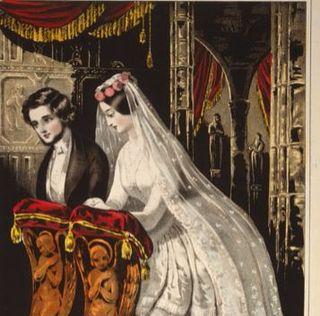Marriage
Why Marriages Are So Difficult to Sustain
The challenges aren't simply personal or psychological: They are structural.
Posted June 29, 2016

Why is marriage so difficult to sustain?
The answer lies in four sources of tension that are intrinsic parts of contemporary society.
First, there is a tension between marriage’s emphasis on commitment and modern society’s stress on personal self-fulfillment. In the nineteenth century and much of the twentieth, women were expected to sacrifice their individuality for the sake of the marriage. Even today, there remains the expectation that women have a responsibility to make marriage work – whether through counseling or self-sacrifice. Nevertheless, in many cases, the tension becomes too much to bear and individuals ultimately decide to pursue their own happiness and fulfillment, rather than subordinating their wishes and well-being to another person.
Second is the tension between modern marriage’s emphasis on intimacy – physical, sexual, and emotional – and its social and economic functions: To consolidate income, provide emotional sustenance, and offer a secure setting in which children can grow. There is a tendency to speak of marriage as essentially an emotional bond, but even today, as in the past, marriage creates an economic union, one that is essential, for most adults, to achieving a prosperous middle class lifestyle. Not surprisingly, when the costs of living with another person outweigh the contribution that they make, the marriage falters.
Third is an existential reality: that marriage, the most psychologically intense relationship that most adults will ever experience, is inevitably an arena for conflicts over power and authority. Conflicts are inherent in a relationship where decisions about finances, sex, childrearing, and many other issues must repeatedly be made. Highly romanticized notions of togetherness, bonding, and soul mates joined togetherness fade in the everyday conflicts that pervade married life.
The fourth source of tension lies in the ever escalating expectations attached to marriage and the erosion of the supports that helped sustain marriages in the past: including extended kinship relations and friendships rooted in geographical proximity. Over time, marriages have grown more emotionally bounded and inward turning. Marriage has become a lonely life raft in a storm-tossed sea.
The tensions besetting today’s marriages are intense. Career demands and a child-centered focus mean that many couples, like ships passing in the night, spend surprisingly little time together. Expectations of equality in roles and responsibilities are seldom realized, especially after the birth of a child, when many couples gravitate toward a traditional division of labor. Money can buy domestic help for the more affluent, but even this help comes with its own burdens, as the wife typically must oversee hiring and management.
Marriage has survived as an institution by adapting to shifting circumstances. Over time, marriage conceived as a patriarchal relationship gave way to marriage defined by companionship. Marriage as an institution with fixed gender roles was replaced by marriage as a somewhat more flexible relationship. For marriages is to persist in today’s more individualistic environment, the central tensions besetting relationships must be addressed head-on. Yet, as I have tried to suggest, the ultimate sources of marital stress are not individual; these are structural, inextricably embedded in the circumstances of contemporary life.
A growing number of adults consider marriage is an outmoded institution, or, at best, a necessary evil. But most American adults disagree, considering marriage the culture’s most profound symbol of commitment and a liberation from loneliness. At its best, marriage means that a person does not undertake life’s journey alone, but has the opportunity to share its joys, sorrows, and memories with someone else. Above all, a successful marriage impels individuals to grow along multiple dimensions.
Marriage is no longer the preeminent way that adults organize their lives. Growing numbers of adults now find fulfillment in a range of relationships, including cohabitation, friendship circles, and the single life. Today, marriage has no definitive rule book. For a marriage to survive, it must meet the needs of the partners as they individually define them. Some find fulfillment in marriages that are egalitarian; others in relationships that are more traditional. Tolstoy was certainly wrong when he declared that all happy marriages are alike.
In the contemporary United States, most adults will experience the breakup of a marriage or of a cohabiting relationship. As the stigma attached to divorce faded and as supports for marriage weakened, marriage has become more contingent and conditional. Nevertheless, the overwhelming majority of American adults continue to marry and invest marriage with a host of fantasies, expectations, hopes, and dreams.
Samuel Johnson called second marriages the triumph of hope over experience. Today, his phrase might apply to first marriages, too. Marriage, more than ever before, has become a risky endeavor, more fraught and fragile than ever.




